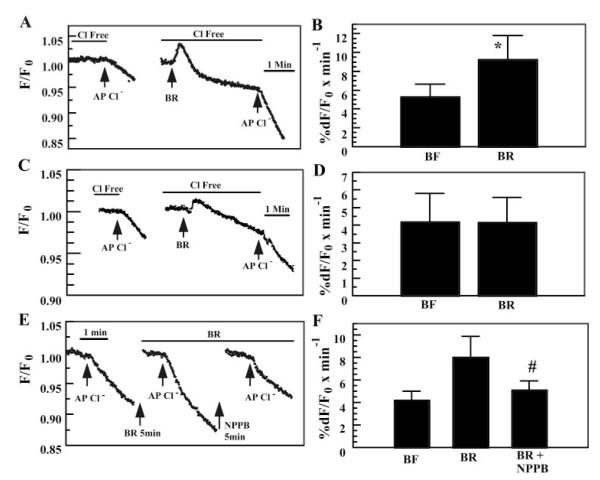Fig. 2.
Effect of on apical Cl− permeability in BCEC and CHO cells. A: BCEC. Both apical and basolateral compartments were initially perfused with Cl−- and -free Ringer solution. After the 1st apical (AP) Cl− pulse, -rich Ringer solution (BR) was introduced on both sides for at least 5 min before the 2nd Cl− pulse. Break in trace indicates period of wash in Cl−-free solution until trace stabilized (at least 5 min). B: summary data for A; all fluorescence values were normalized to the fluorescence value in the absence of Cl− (Fo) obtained just before addition of Cl−. Calculated slopes were adjusted by any background drift in the fluorescence trace that was apparent just before addition of Cl−. *Significantly different from free solution (BF) (n = 11; P < 0.05). C: CHO cells, same experiment as in A. D: summary data for C (n = 7). E: effect of 5-nitro-2-(3-phenylpropyl-amino)benzoic acid (NPPB) on -activated apical Cl− permeability in BCEC. F: summary data for E. #Significantly different from BR (n = 8, P < 0.05).

